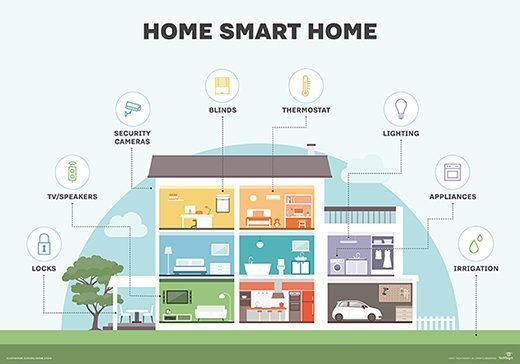Transforming your house into a smart home is no longer a futuristic concept. It's a practical way to enhance comfort, security, and efficiency. Here's a guide to get you started.
Understanding the Basics
A smart home is essentially a network of interconnected devices that can be controlled remotely or through voice commands. This network usually revolves around a central hub or smart speaker, like Amazon Echo, Google Nest, or Apple HomePod. These devices act as the brains of your operation, allowing you to control various appliances and systems.
Essential Smart Home Devices
- Smart Lights: Replace traditional bulbs with energy-efficient LED smart bulbs. Control brightness, color, and even create schedules to mimic your presence when away.
- Smart Thermostats: Optimize energy consumption by setting temperature schedules. Some models learn your preferences and adjust accordingly.
- Smart Locks: Enhance security with keyless entry and remote access. Receive notifications when doors are locked or unlocked.
- Smart Plugs: Convert any device into a smart one. Control power consumption and create schedules for appliances.
- Smart Speakers: Serve as the central command center for your smart home. Use voice commands to control devices, play music, and get information.
- Security Cameras: Monitor your home in real-time with indoor and outdoor cameras. Receive alerts for motion detection and access footage remotely.
Start Small: Begin with a few essential devices like smart lights and a smart speaker. This will give you a feel for the technology and its benefits.
- Choose a Hub: Decide on a central hub or smart speaker that suits your preferences and ecosystem (Apple, Google, Amazon).
- Create Routines: Automate tasks by creating routines. For example, set your lights to dim, thermostat to lower, and locks to engage when you say "goodnight."
- Explore Smart Appliances: Consider upgrading to smart appliances like refrigerators, washing machines, and ovens for added convenience and energy efficiency.
- Prioritize Security: Protect your smart home network with strong passwords and regular software updates.
Additional Tips
- Energy Efficiency: Smart devices can significantly reduce energy consumption. Monitor energy usage and identify areas for improvement.
- Remote Access: Control your home from anywhere with a smartphone app.
- Voice Control: Embrace voice commands for hands-free convenience.
- Home Integration: Connect your smart home to other systems like entertainment and security for a seamless experience.
- DIY or Professional Installation: Depending on your technical expertise, you can install devices yourself or hire a professional.
Remember, building a smart home is a gradual process. Start with the basics and expand as needed. Enjoy the convenience, comfort, and security that a smart home offers.











 Thanks for sharing .
Thanks for sharing .

comment:
p_commentcount